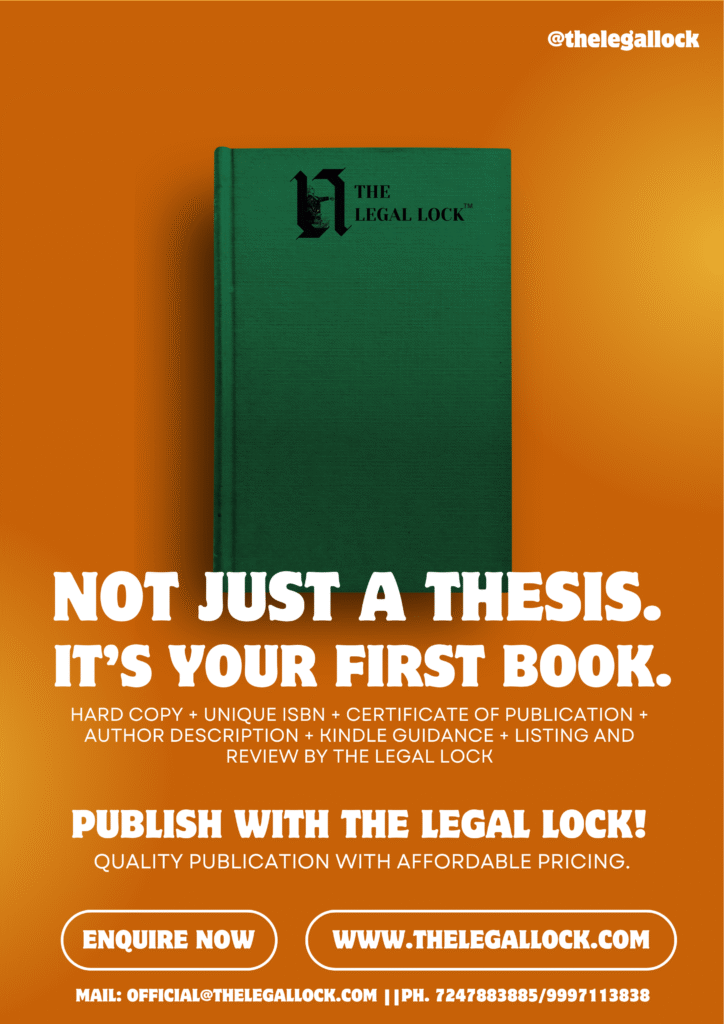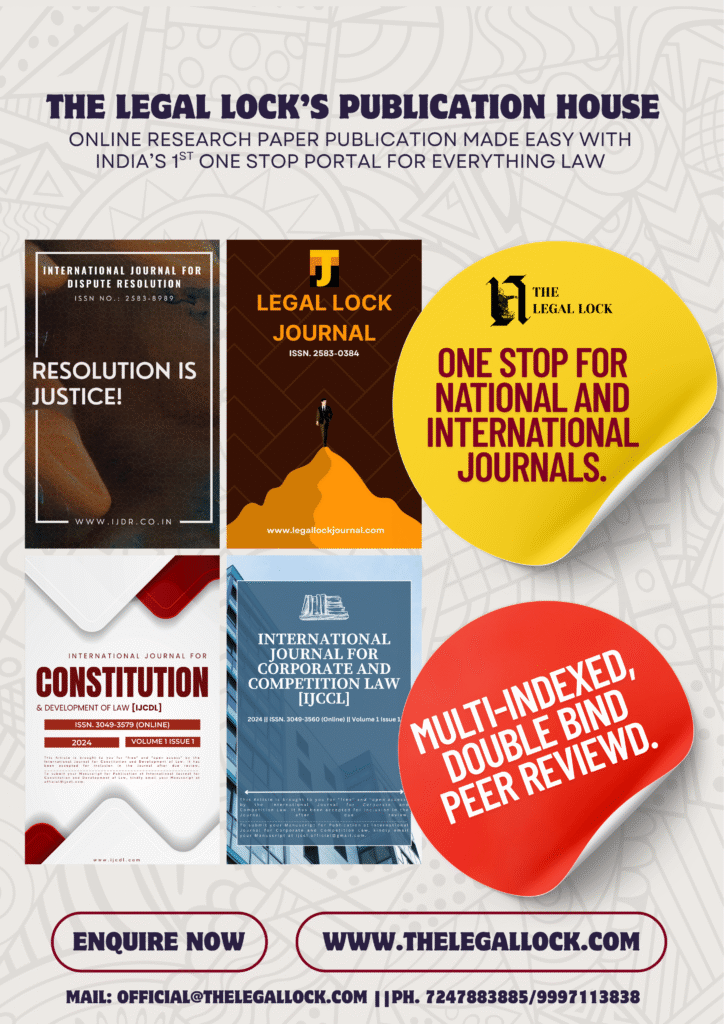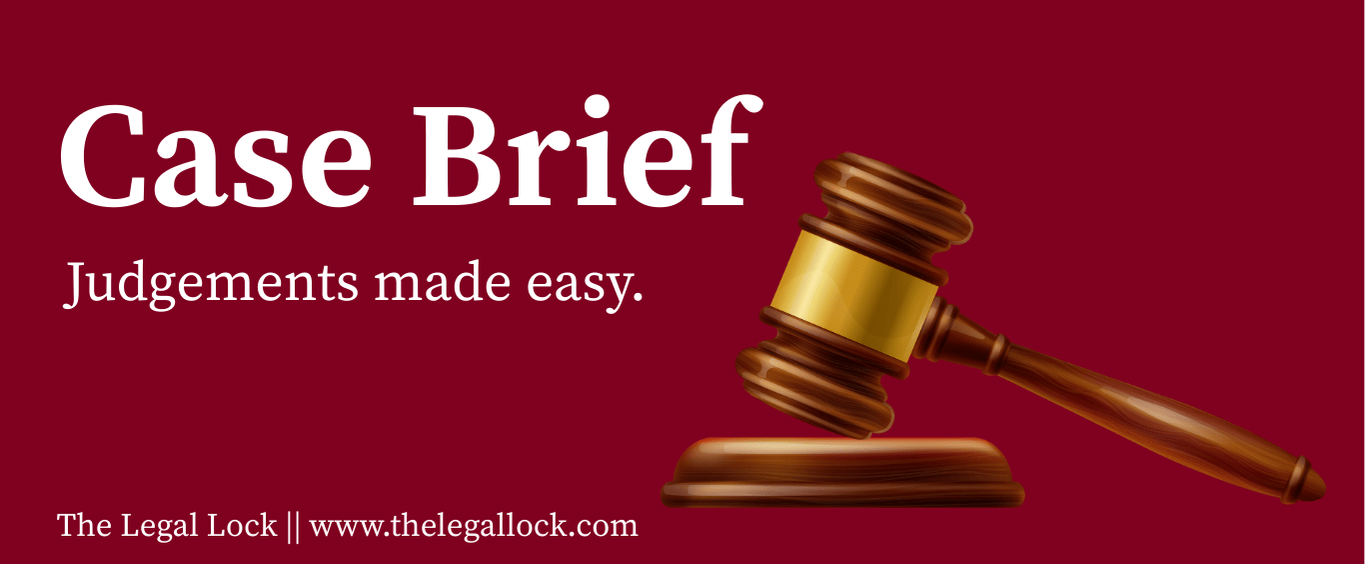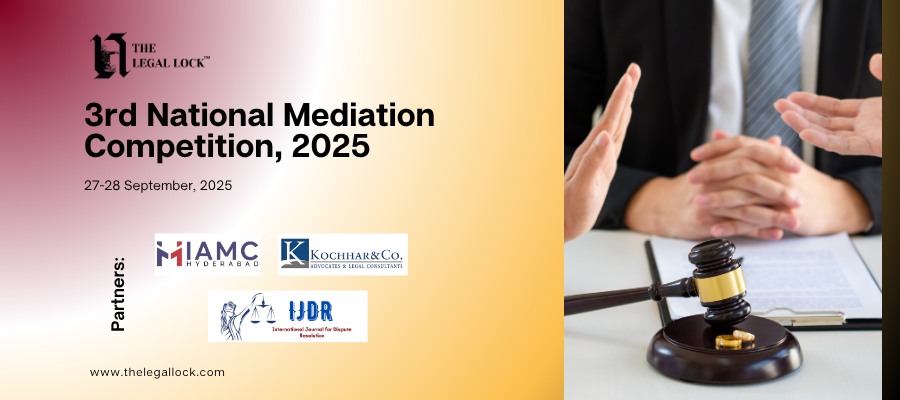| CASE NAME | M.Nagaraj & Others vs Union of India & Others on 19 October 2006 |
| CITATION | Writ Petition (civil) 61 of 2002 |
| COURT | Supreme Court of India |
| BENCH | Y.K.Sabharwal Cji, K.G.Balakrishnan, S.H.Kapadia, C.K.Thakker, P.K. Balasubramanyan |
| DATE OF DECISION | 19 Oct 2006 |
FACTS
In the case, the petitioner filed a complaint and requested the issuance of a writ of certiorari under Article 32 of the Indian Constitution. The petitioner also declared that Article 16(4A) of the Indian Constitution was unconstitutional and in violation of the fundamental principles of the document.
The petitioners argue that by using the modification power granted by the violated amendment, the same legislator has overturned decisions made by this court and violated the basic principles of the constitution by functioning as both a legislative body and a court. As a result, the previously mentioned modification is unconstitutional4 and is likely to be reversed.
The petitioners claim that one of the amendment’s other objectives is to uphold the right to equality, which is a fundamental component of the Constitution. As per the petitioners, “rapid promotion” is meant to be understood in the context of Article 16(1), not “consequential seniority.”
The petitioners contend that, in contrast to what this Court determined in the Indra Sawhney case, reserving for members of the impoverished classes is only permitted during initial recruitment and not during promotion under Article 16(4).
Petitioners claim that the 1995 constitution was passed against the court’s injunction. The carriage exception (4A) was reinstated by Article 16 of the previously mentioned amendments.
The petitioners argue that giving promotions earned with roster points accelerated seniority would be disastrous. A graduate stream roster-point promotion will get him to the fourth level by the time he turns 45.
At the age of 49, he would reach his goal and stay there for nine years. He was eligible for the fourth level, but the general merit promotion would not since he would have finished the third level of the six at the age of 56 and would have been unemployed by then.
The petitioners contend that officers from reserved categories will receive unfair treatment in higher-level positions since the 85th Amendment, which permits seniority-based reservations in promotions, is under dispute.
ISSUES
- Is it accurate to say that the judgments made in response to the Supreme Court’s decision regarding promotions were applied backwards in time?
- Do equity and equality form part of the core principles, the structural foundation, or both constitution?
- To what extent, if at all, have the contentious constitutional amendments expanded legislative authority to the point where all constitutional limitations have been removed?
Arguments of the Plaintiff
In M Nagaraj versus Union of India, the appellants contended that equality is a fundamental component of the Constitution, as emphasized in Article 14. They argue that it is impossible to consider the Constitution without fairness, particularly when it comes to employment in the public sector. The emphasis is on Article 16 as a particular guarantee for employment equity. The worry expressed is that reverse discrimination may result if the equality balance is upset in favor of group norms.
The argument in M Nagaraj v. Union of India regarding amending power is that Parliament cannot extend its amending district to the point of repealing the Constitution. Any change that compromises the fundamental framework is considered unsuccessful. It is suggested that the interpretation of Articles 16(1) and 16(4) should be based on the definition of equality of opportunity in public employment, as established in cases such as Indra Sawhney. A distinction is made between permissible reservation restrictions and quota limitations.
The argument is that the disputed revisions contradict the core values of good governance, as well as the standards of efficiency, merit, and public service morale, and that Articles 14 and 16 should be interpreted considering Article 335. The plaintiff makes a compelling case that the disputed revisions could cause division, strife, and dissolution.
Arguments of the Respondent
In M Nagaraj v. Union of India, the respondents contended that the power to amend the Constitution is a “constituent” power rather than a “constituted power,” suggesting that the Legislature’s ability to do so is unrestricted. They did, however, stress that changes should not go against the fundamental framework of the Constitution. It is claimed that the equality outlined in Articles 14 and 16 is different from the fundamental equality found in the Constitution.
In M Nagaraj v. Union of India, the respondents argued that the fundamental elements of the Constitution—constitutional supremacy, democracy, secularism, and the separation of powers—do not relate to the interpretation of Article 16’s balancing of reserved and public privileges. They contend that neither the right to consideration for advancement nor the body of precedent pertaining to public services are essential components of the Constitution.
In M Nagaraj versus Union of India, the respondents further claimed that by maintaining reservations at the recruiting level, the contested modifications comply with the ruling in Indra Sawhney. They contend that, considering Article 335’s authority, reservations at higher levels may be justified, subject to restrictions imposed by the court to protect the interests of the general category. Finally, they argue that reservations under Article 16(4) are permitted under Article 16(4B) if they stay within reasonable bounds and can only be revoked if the reserve is too large. It is argued that Article 16(4B)’s enabling authority is legitimate.
JUDGEMENT
The Bench concluded that while Articles 16(4A) and 16(4B) were removed from Article 16(4), Articles 16(4A) and 16(4B) were incorporated into the contested constitutional amendments. They do not alter in any way the format of Article 16(4). According to Article 335, they maintain the guiding principles or fundamental elements of insufficiency of participation and backwardness that permit governments to make reservations while considering the overall effectiveness of governmental management. Only SCs and STs are covered by the contested amendments.
The Article 16 system of equal opportunity will not function without the 50% threshold, the creamy layer hypothesis, and the arguments of backwardness, inadequate representation, and overall administrative effectiveness. Similarly, the subclassification of OBCs and SCs/STs as decided in the Indra Sawhney case, the idea of a post-based roster with an implicit notion of the substitute as decided in the R.K. Sabharwal case5, and the concept of the “creamy layer” are all still legally required under the constitution.
Bench concluded that in every case, the concerned State must show the existence of compelling factors, such as backwardness, lack of participation, and overall administrative efficacy, before enacting a reservation provision.
The Hon’ble Bench stated that the challenging part is merely an enabling provision, and that the government is not obligated to implement reservations for SC/ST in promotions. However, to implement such a provision, the State must comply with Article 335 and gather quantitative evidence of the class’s deprivation and underrepresentation in the labor force. The Bench concluded that although the State’s reservation regulations, as previously mentioned, have a solid legal foundation, care must be taken to avoid excess, eliminate the creamy layer, or indefinitely extend the reservation.
According to a report, the state must show how the reservation in promotions will increase administrative effectiveness, how the group receiving benefits from the reservation is underdeveloped, and how there is insufficient representation in the position for which the reservation in promotions is to be granted. The Court upheld the validity of the disputed constitutional amendment. The acknowledged court asserts that the allocation of rights and obligations is a matter of social justice. The optimal location for distribution is where means, rights, and needs meet. These three needs fall into one of two categories: “formal equality,” which refers to treating everyone equally before the law, or “proportional equality.”
ANALYSIS
A five-judge Supreme Court panel upheld the validity of Articles 16(4A) and 16(4B) in M. Nagaraj v. Union of India. Nevertheless, the arguments to support the Articles’ legitimacy are beset with several legal issues. In this case, the reservation was justified by comparing the interests of candidates in the reserved group with those of applicants in the general category. Neither Article 15 nor Article 16 of the Constitution make any reference to balancing. The emphasis of reservation is diverted from socioeconomic discrimination, which is the issue that Article 16 was meant to address, by making such a claim. The focus instead switches to public employment, in which the ruling mandates be distributed evenly between reserved and general candidates. In M. Nagaraj, the Court established the first-ever connection between the ideas of equity, justice, and merit. The Court declared for the first time that these guidelines are applied to public employment in the form of “quantifiable facts in each case.” The equality of the facts, not the equality of the law, is prioritized when interpreting Article 16(4).
In the present case, the Supreme Court ruled that Parliament was right to expand the scope of reservations for SCs and STs to include promotional offers with three riders. I believe this case’s outcome will influence how the weaker segments of society develop. Although this is a short-term process, the laws designed to provide reservations for promotions will undoubtedly encourage SCs or STs to participate in work more efficiently. Because it quickly raised concerns that it fails to recognize that, despite centuries of discrimination, the SCs and STs continue to face discrimination by forcing the state to consider their underdevelopment in relation to promotion quotas. Let alone the fact that some of them do not belong to the creamy layer category within the SCs and STs due to their lack of backwardness, insufficient presence in services, or inefficiency.









